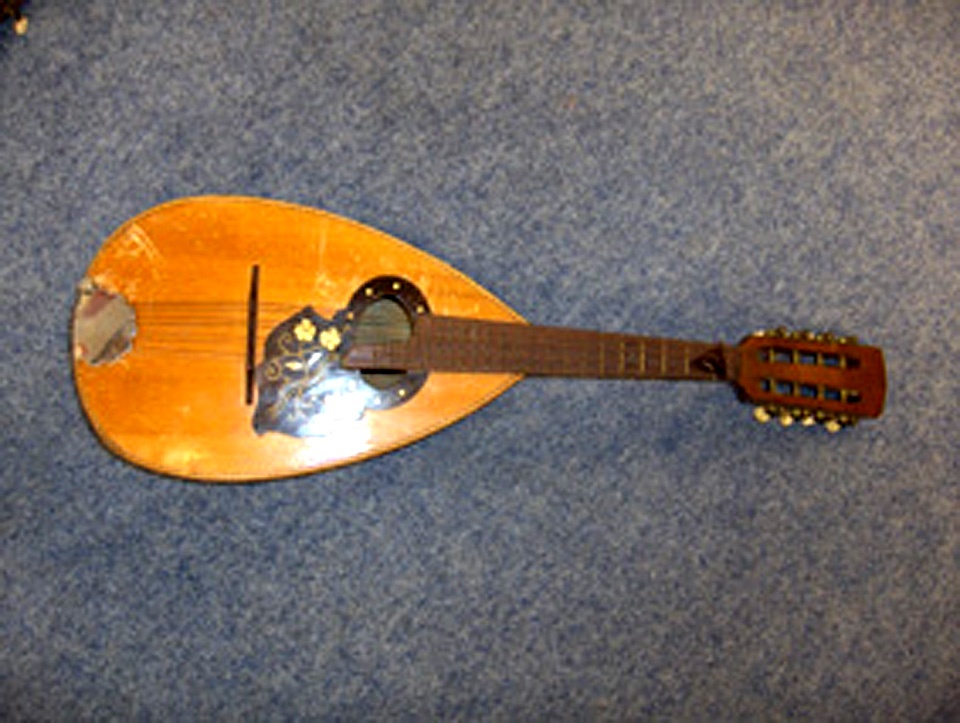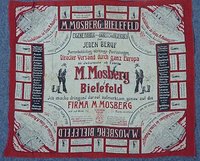A) Die Mandoline wurde aus verschiedenen Hölzern gefertigt. Die dunklen Holzsorten dienen der Verzierung (einfache florale Intarsienarbeit aus Holz und Perlmutt). Der bauchige Körper besitzt am im oberen Teil ein Schallloch. Alle 4 Saitenpaare sind über den Steg gespannt und an der gegenüber liegenden Seite vom Hals mit einem Saitenhalter aus Metall befestigt. Darauf steht "Marcelli". Als zusätzliche Verzierung wurde um den Korpus ein Band aus Holz gearbeitet, das sich leicht geschwungen hin zur Bauch- und Unterseite verbreitert. Die Mandoline weist Gebrauchsspuren und Kratzer auf.
b) Plektrum (Spielblättchen) aus rotem Kunststoff
Die Mandoline stammt aus dem Besitz des Lehrers Wilhelm Scholl und seiner Töchter.
en

